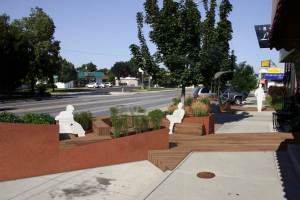The triple bottom line of sustainability, People, Profit and Planet has become a popular buzzword for people trying to describe the future of sustainable business practices. Where the triple bottom line fails is in its relative inability to transform itself from a nice saying to an implementation process that actually generates sustainable projects for our future.
In 2005 a group of Architects, designers, and other diverse experts in the public interest design movement came together at the Harvard Graduate School of Design to evaluate the existing social environmental and economic role that the fields of architecture, design and planning play in creating sustainable communities and development . This meeting spawned the Social Environmental Design Network, which works to facilitate the collaboration of design practices with local communities to create places that are healthy, sustainable and economically viable.
The SEED Network which is focused on building and supporting a culture of civic responsibility and engagement in design practices created an evaluation tool which utilizes both qualitative and quantitative indicators to evaluate project success. This evaluation tool attempts to create sustainable partnerships and designs similar to the LEED (leadership in Energy and Environmental Design) certification program, but instead to giving projects a grade based on a predetermined evaluation metric, SEED looks at projects from a context specific process that is flexible enough to meet different community and project needs, but strict enough to ensure that the project meets the five SEED principles) listed below
SEED Principle 1: Advocate with those who have a limited voice in public life.
SEED Principle 2: Build structures for inclusion that engage stakeholders and allow communities to make decisions.SEED Principle
SEED Principle 3: Promote social equality through discourse that reflects a range of values and social identities.
SEED Principle 4: Generate ideas that grow from place and build local capacity.
SEED Principle 5: Design to help conserve resources and minimize waste.
SEED has the potential to be a power planning tool since it focuses not only on elements of design, but has civic engagement processes built into the very core of the evaluation. We can have energy efficient buildings and new innovative green technologies, but the community is a key part of this sustainable development equation which unfortunately doesn’t see much press.
Here is a complete list of projects that were given SEED awards of excellence in 2013.
These award winning projects have had a significant community impact and utilize sustainable design and technology to ensure continued community benefit.
Check out what Architectural Nexus, a collaborative design and architectural firm is doing with SEED design and local business partnerships in Salt Lake City.
You can pledge to incorporate SEED principles into your future work here.
Programs like SEED bring us one step closer to reaching that triple bottom line of sustainability by creating community collaborations with business and environmental strategies.



